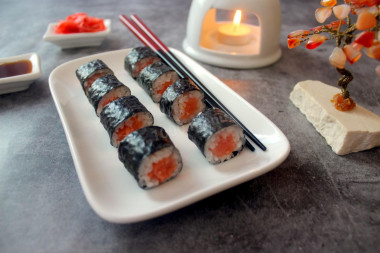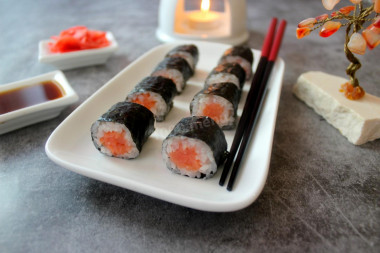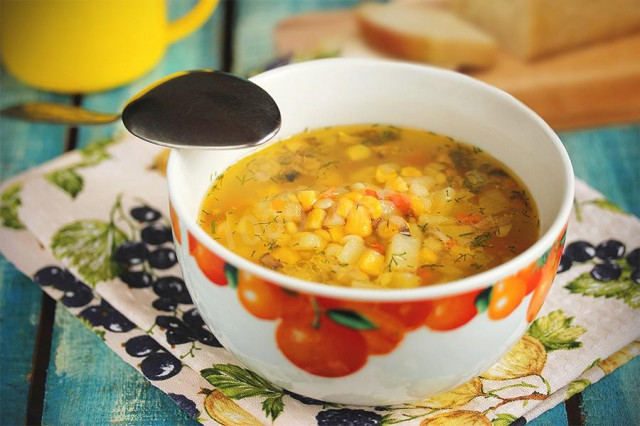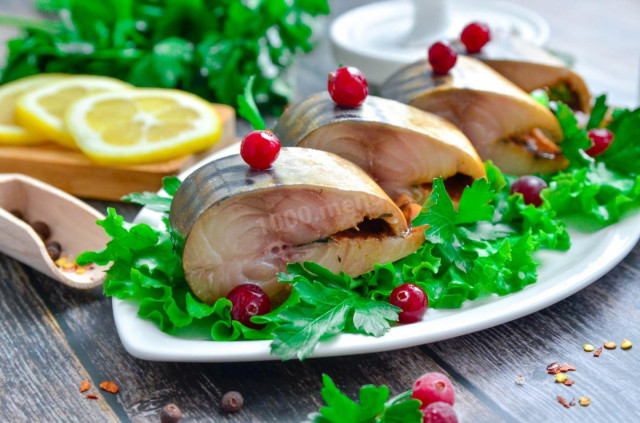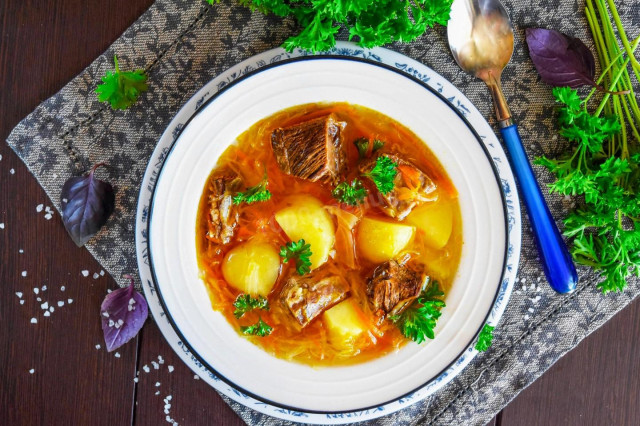Composition / ingredients
Step-by-step cooking
Step 1:
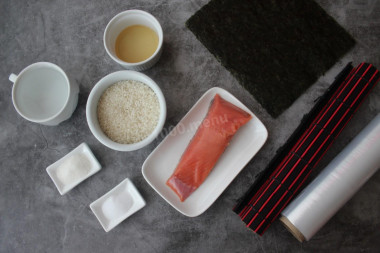
Prepare the ingredients and inventory for making rolls. You will need a mat and a food wrap. Rice must be purchased Japanese, round-grain or special rice for sushi. Long-grain and steamed rice is categorically not suitable, because due to the low starch content in the grains, such rice does not have the necessary gluten, and the cooked dish will simply crumble. For refueling, it is necessary to use rice vinegar.
Step 2:
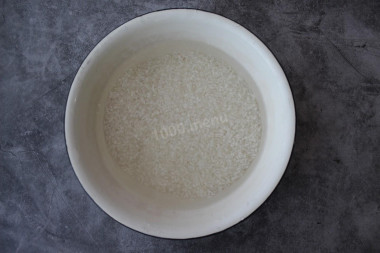
Pour the rice into a bowl, pour cold running water and, in order not to damage the grains, rinse the rice with careful movements, drain the muddy water and pour clean cold running water again. Rice should be washed at least 4 times, the water should become clean and transparent. Discard the washed rice in a colander and leave it for 10 minutes, during which time all the excess liquid will drain.
Step 3:
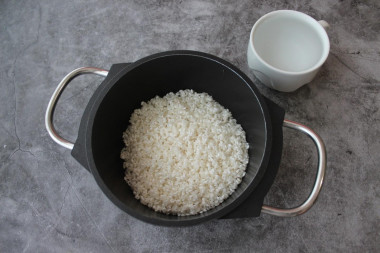
Pour the rice into a saucepan and cover with water, put on fire. It is very important to observe the ratio of rice and water. It should be 1:1. When the water boils, cover the pan with a transparent lid, reduce the heat to low and cook for 15 minutes. During this time, the moisture should completely evaporate. The lid cannot be opened during cooking, therefore, in order to see the cooking process, it is better to use a transparent lid.
Step 4:
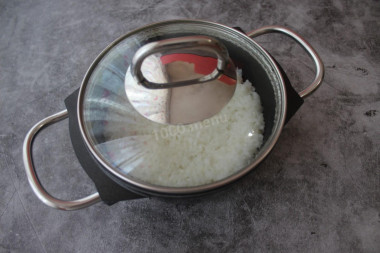
After the specified time, remove the pan with rice from the heat and leave the rice to steam under the closed lid for another 10 minutes. Do not open the lid, the rice should be fully cooked.
Step 5:
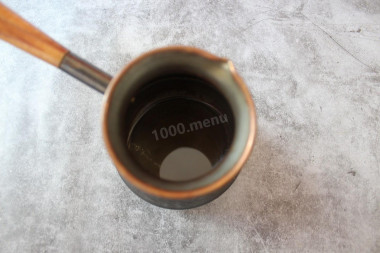
At this time, prepare the dressing. Pour rice vinegar into a small ladle (turku), add sugar and salt. Put the ladle on a slow fire and, stirring, dissolve the loose ingredients. As soon as the sugar and salt have dissolved, immediately remove the dressing from the heat. The dressing should never boil, so you can not cook it over high heat.
Step 6:
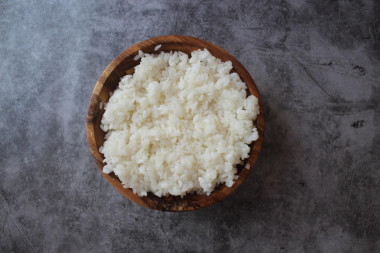
Put the finished rice in a wooden bowl, wiped with a damp towel, so the rice will not stick to the dishes. It is better to use a special tub of hangiri made of cypress, but I don't have one, so I used the one that was. Wooden dishes are used to prevent any interaction with rice vinegar, and also wooden dishes absorb excess moisture of rice when it is stirred.
Step 7:
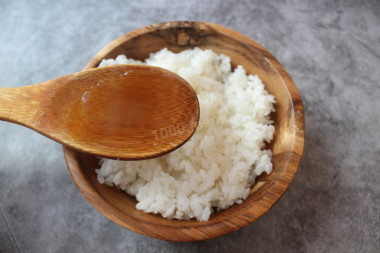
Take a wooden spatula and place it over the rice. Pour the vinegar dressing on the spatula, and it will gently spread over the rice. Break the rice with smooth movements, mix it carefully, trying not to damage the rice grains. Cover with a damp, clean towel and let the rice cool. When the rice cools down, you can start forming sushi and rolls.
Step 8:
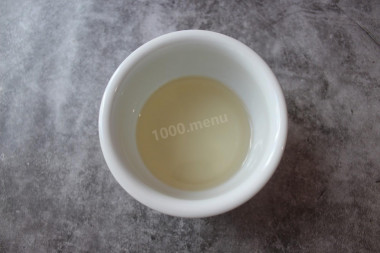
Prepare water for wetting your hands. In a small container, pour the rice bite and water in a ratio of 1:3. Wetting your hands in such a solution, it will be easier to work with rice with your hands. It is better to use filtered water, as it directly enters the consumer product without further heat treatment.
Step 9:
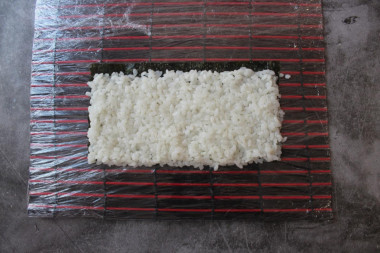
Prepare the mat. It must be wrapped several times with cling film. The rolls are made with a small diameter, so cut the nori leaf in half. If this is not done, then the rolls will turn out to be a "snail". On the prepared mat, put half of the nori leaf with the glossy side down. Moisten your hands in the solution, take 70 grams of boiled rice and level it along the nori, leaving 1 cm free without rice on top.
Step 10:
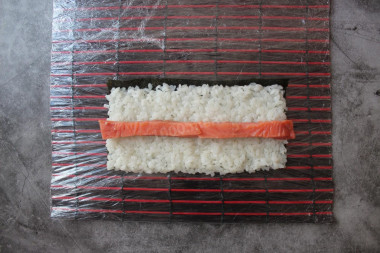
Lightly salted fish, peel off the skin and bones, cut into oblong cubes of small size. The amount of salmon per nori leaf will take about 15 grams. Place the salmon cubes in the center of the rice. Helping with the mat, start rolling the roll away from you. The free edge of the nori will turn around and stick to the roll. With the help of a mat, give the roll a round shape.
Step 11:
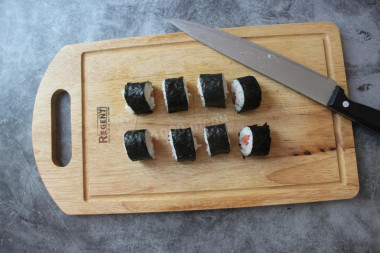
Transfer the finished roll to the board and, wetting the knife in the solution, first cut the edges, then cut the roll in half. Connect the two halves of the roll and cut in half again. And cut each half again. You should get 8 rolls. 8 small rolls are ready. Serve the finished shake maki on the table with wasabi, pickled ginger and soy sauce. The knife must be wetted, so the rice will not stick to the knife, and will not lead to deformation of the rolls.
In many recipes of the shake maki, it is indicated that the nori must be cut in half. I did so. I still advise not to cut the algae leaf, but rather put the fillings 2 times more. Firstly, it is extremely inconvenient to work with half a sheet of nori, and secondly, the rolls are very small.
Caloric content of the products possible in the composition of the dish
- Minced salmon - 130 kcal/100g
- Smoked salmon - 162 kcal/100g
- Grilled salmon - 283 kcal/100g
- Fresh salmon - 201 kcal/100g
- Salted salmon - 269 kcal/100g
- Salmon saute - 379 kcal/100g
- Soy sauce - 51 kcal/100g
- Granulated sugar - 398 kcal/100g
- Sugar - 398 kcal/100g
- Nori - 3 kcal/100g
- Wasabi - 143 kcal/100g
- Salt - 0 kcal/100g
- Water - 0 kcal/100g
- Rice vinegar - 20 kcal/100g
- Round rice - 330 kcal/100g
- Pickled ginger - 51 kcal/100g


